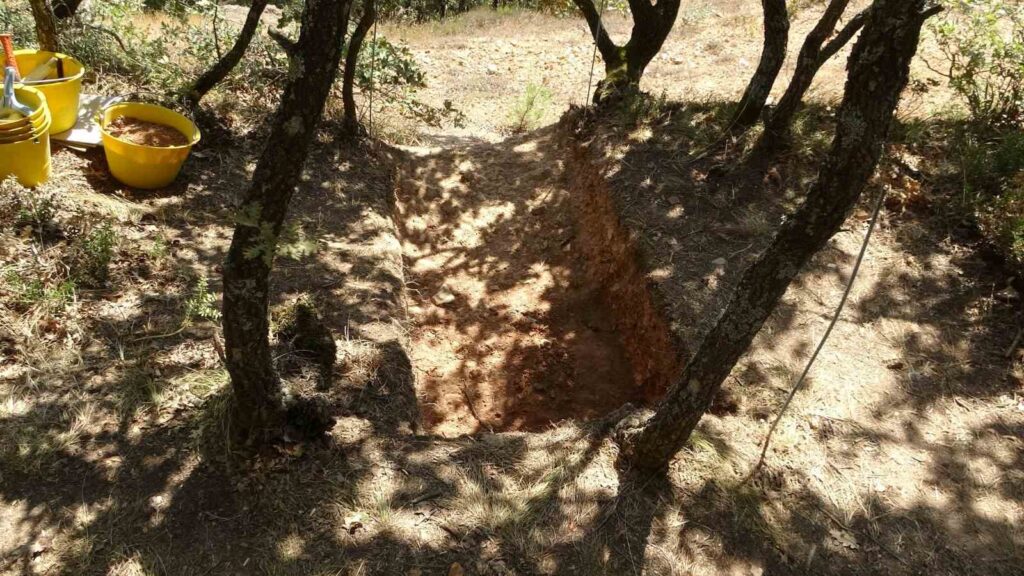Excavation work has begun in the 86,000-year-old living area identified in the İnkaya Cave.
In the excavation works at the İnkaya Cave, located within the borders of Bahadırlı village in the Çan district of Çanakkale, which have been ongoing since 2017, this year the first excavation was conducted in the area where traces of life dating back 86,000 years were found in previous years.

Since 2017, excavation works in the Inka Cave, located within the borders of Bahadırlı village in the Çan district of Çanakkale, have made significant progress this year with the first excavation conducted in an area where traces of human life dating back 86,000 years were found in previous years. During the excavation, traces of human life dating back to 86,000 years ago were discovered along with non-in-situ handheld tools.
Between 2017 and 2020, excavation works were carried out at the Inka Cave under the presidency of the Troy Museum Directorate, with the scientific coordination of Prof. Dr. İsmail Özer and an international team. Since 2021, the excavation has been transformed into a Presidential Controlled Excavation status under the leadership of İsmail Özer. This year’s excavation works, conducted with the permissions and support of the Ministry of Culture and Tourism and sponsored by Truva Bakie Maden, are being carried out by a team of 15 people. This year’s studies revealed that fossil humans who lived in the region during the Middle Paleolithic period resided in the cave for a long time and intensively due to flint raw materials and hot water sources.
For the first time this year, excavation work was conducted in the northeastern slopes of the Inka Cave in an area previously dated to 86,000 years, where traces of human life were found. The excavation revealed traces of human life dating back to 86,000 years, as well as non-in-situ handheld tools.
Prof. Dr. İsmail Özer, a faculty member of the Department of Anthropology at Ankara University, Faculty of Language and History-Geography, Paleoanthropology Sub-department, and the head of the Inka Cave excavation, stated, “This is an area of about 500 square meters that we had previously discovered and dated, which was revealed by erosion. Here, we are finding tools typical of the Middle Paleolithic period. In other words, our findings here are slightly older than those from the cave. Our dating showed us that this area dates back 86,000 years. This year, we started excavation work for the first time, and we are digging down to 86,000 years. We will start from the top and open the hill from the middle downwards. Our findings show that previously non-in-situ handheld tools were found in situ here. By opening different sections of the cave in an area of about ten acres, we can see how the people of that period used different areas and for what purposes. So far, we have worked in an excavation area of 41 square meters. This shows us that in order to understand the cave’s potential, we need to expand our excavation works in different areas in the coming years.”
Stating that they have begun excavation work this year in an area dated back 86,000 years on the northeastern slopes of the cave, Excavation Director Prof. Dr. İsmail Özer continued: “In this area, the flint tools we refer to as typical Middle Paleolithic tools started to emerge. Additionally, we also identified handheld tools that we previously found in non-in-situ areas for the first time in the excavation, in their original positions. The significance of these tools indicates that the human brain has surpassed a certain level and that humans began to use these stone tools, which they produced themselves, by combining them with different materials in a more useful way. This different material could be something like horn, bone, or a piece of dry leather, which wraps around the handle area, allowing the tips to be used more effectively, similar to knives, trowels, or sickles that we use in our daily homes. These tools are created by shaping the tip to allow a different material to fit into the tip. Of course, since it will be combined with a different material, this thinning is done consciously, and we refer to these as handheld tools. These handheld tools are not very common worldwide, and as I mentioned earlier, they show us that the human brain has become capable of creating more complex and intricate tools.







